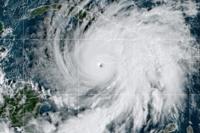An electro-magnetic pulse attack could destroy America's defenses, leaving the U.S. in a technology world equivalent to the 1800s. We wouldn't even be able to figure out who attacked us.
An EMP weapon would take out electronic devices including targeting, communications, navigation and sensor systems, and it would cripple our ability to defend ourselves against a land invasion. The more we use electronic devices, the more dependent we are on them, and the more vulnerable we are to this sort of threat.
Now a European institute says it has developed a device that can withstand the EMP -- and identify an attacker in the aftermath.
What is an EMP?
An EMP is a blast of electromagnetic energy that can disrupt -- if not destroy -- electronic devices within an affected area. You can't smell, taste or feel EMP radiation, which can be unleashed by nuclear explosions as well as by solar storms and devices.
From a low-level electromagnetic pulse that could jam electronics systems temporarily through to megabursts that would utterly fry electric and electronic equipment, any sort of pulse would be bad news.
Planes could fall from the skies, transportation could come to a screeching halt, water and sewage systems could suddenly cease to work, and on and on. An EMP can destroy electrical components permanently; they could not be repaired.
Tech to Hunt EMP Attackers
EMP attacks are popular devices in films. In "Ocean's Eleven," George Clooney's gang uses one to take out Las Vegas' power grid; in the "Matrix" films, Keanu Reeves uses one to keep nasty robot squid off his spaceship.
What works on the silver screen is also conceivable in reality," Michael Joster, a researcher from Germany's Fraunhofer Institute for Technological Trend Analysis INT in Euskirchen, said in a statement.
Joster's team is developing technology to detect the source of an EMP attack, including an attack's strength, frequency and direction.
Such a device would be an engineering feat, since it would need not only to withstand the pulse, but to measure very high field strengths from very short pulses.
To identify type, location and duration, it uses four specialized antennae mounted on a tripod, each of which covers a 90-degree quadrant.
In a monitoring station, a computer takes data from Joster's device. The computer takes data from the device, analyzes it and then provides answers on screen -- where the blast came from and how long it lasted.
The Fraunhofer Institute declined to reveal further details about their device; the stakes in EMP research couldn't be higher, after all, so details about tech related to the threat is closely controlled.
EMP blasts are a real threat: A nuclear detonation high in the atmosphere above the U.S. could create a pulse across all of North America. These weapons are attractive not just to foreign militaries, but to terrorist and criminal organizations as well. (In November, it was widely reported that North Korea was using Russian technology to develop electromagnetic pulse weapons capable of paralyzing military electronic equipment.)
Some high-power microwave weapons small enough to fit in a suitcase can disable smaller targets like neighborhoods, banks and stock exchanges. Devices can be used to cause confusion or to infiltrate secure areas by disabling alarm systems. An attacker would merely need to get within a few yards of a target and push a button to unleash the pulse.
Recently in Berlin, thieves have been using electromagnetic waves to defeat limousine security systems, for example.
Defending against radiation
All electronic devices can take a certain amount of radiation, enabling them to operate without interference from other nearby devices.
But personal devices like televisions and smartphones aren't as important as America's electrnoic grid and defense systems. Completely shielding all our tech, while possible, would be very expensive.
Ballet dancer turned defense specialist Allison Barrie has traveled around the world covering the military, terrorism, weapons advancements and life on the front line. You can reach her at wargames@foxnews.com or follow her on Twitter @Allison_Barrie






























